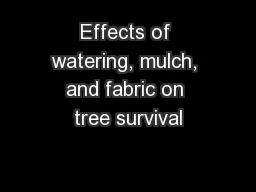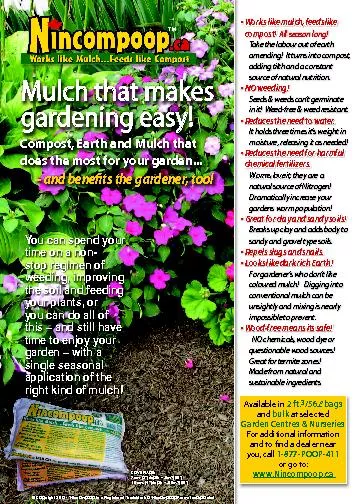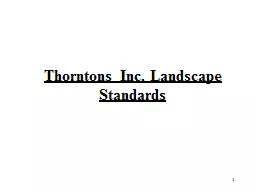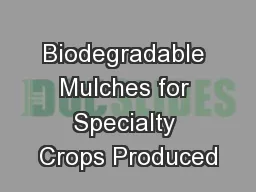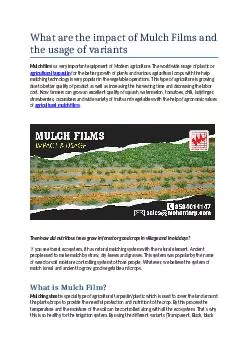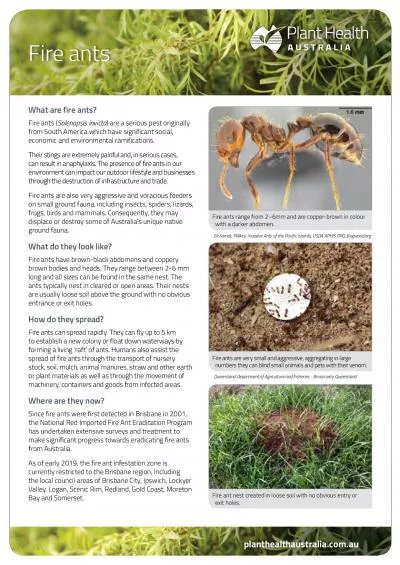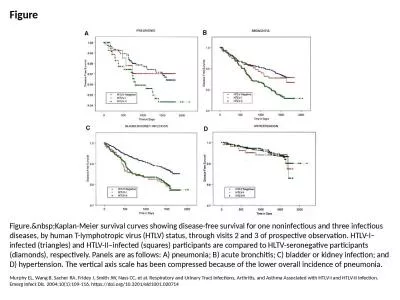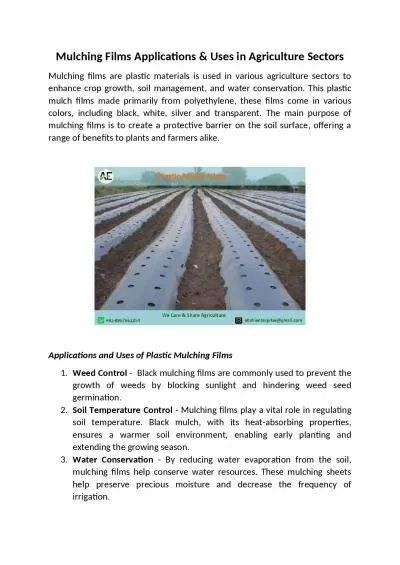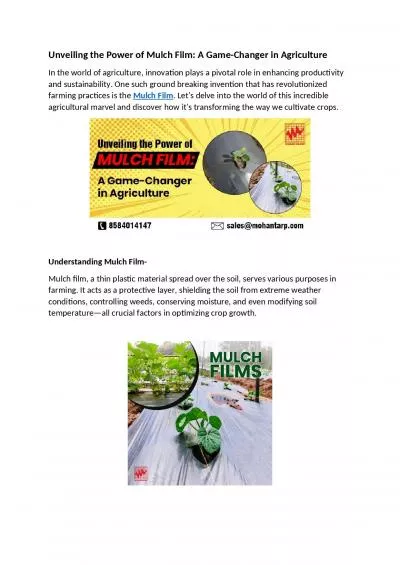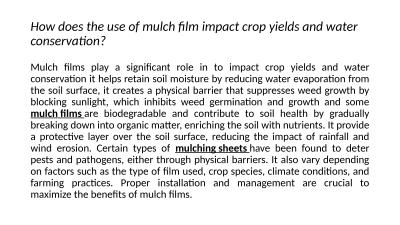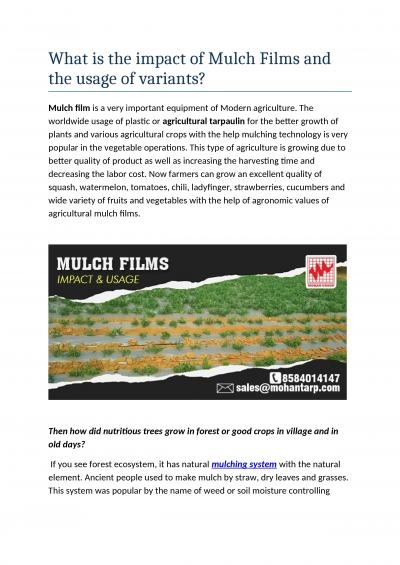PPT-Effects of watering, mulch, and fabric on tree survival
Author : celsa-spraggs | Published Date : 2015-11-26
Results from controlled experiments at King County Restoration Sites Josh Latterell Laura Hartema and Kate Akyuz Water and Land Resources Division Why bother studying
Presentation Embed Code
Download Presentation
Download Presentation The PPT/PDF document "Effects of watering, mulch, and fabric o..." is the property of its rightful owner. Permission is granted to download and print the materials on this website for personal, non-commercial use only, and to display it on your personal computer provided you do not modify the materials and that you retain all copyright notices contained in the materials. By downloading content from our website, you accept the terms of this agreement.
Effects of watering, mulch, and fabric on tree survival: Transcript
Download Rules Of Document
"Effects of watering, mulch, and fabric on tree survival"The content belongs to its owner. You may download and print it for personal use, without modification, and keep all copyright notices. By downloading, you agree to these terms.
Related Documents

